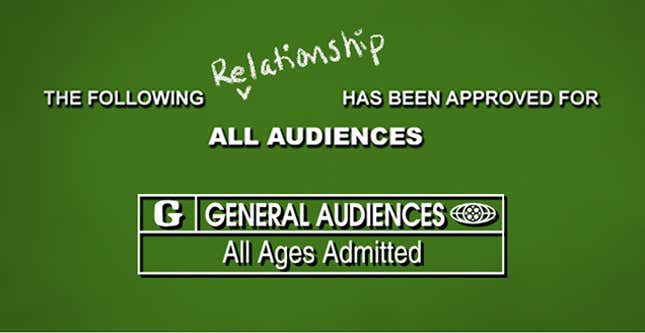Some People Just Aren't Super Into Sex, and That's Fine
Latest

These days, lust feels so ubiquitous that it’s genuinely refreshing to hear about people who just aren’t into sex. Our Fifty Shades fatigue may actually have an upside if the sex-averse and sex-indifferent start getting more media coverage and balancing out the lusty, sexy mainstream.
In a recent piece at Wired, Kat McGowan goes to a campus outreach center at UT Knoxville in Tennessee and talks to a group of people who identify as asexual (meaning not into sex) or demisexual (meaning rarely, but sometimes, into sex). Though such people represent, according to McGowan, anywhere from 1 to 6 percent of the population, the fact of not being DTF is still a barely understood orientation, often mocked and frequently considered abnormal or dysfunctional. These students identify by a variety of unofficial terms coined from collaborative efforts online, such as aromantic asexual, heteroromantic demisexual, panromantic gray-asexual. McGowan notes that these are not “fixed identities,” but rather, “beacons.”
She writes:
Not sure what these terms mean? You’re not alone. The definitions are still in flux, but most people who describe themselves as demisexual say they only rarely feel desire, and only in the context of a close relationship. Gray-asexuals (or gray-aces) roam the gray area between absolute asexuality and a more typical level of interest. Then there are the host of qualifiers that describe how much romantic attraction you might feel toward other people: Genevieve says she could theoretically develop a nonsexual crush on just about any type of person, so she is “panromantic”; Sean is drawn to women, so he calls himself “heteroromantic.”
Such designations may sound strange to anyone charting themselves on a fairly “normal”—that is to say, culturally reinforced and gender-aligned—lust spectrum. Even within this spectrum, there are so many questions and variances. How much do other people inspire lust in you, and what people, and in what way, and how quickly, and does it line up with what you were taught you should feel, and how comfortable are you with that? We may be growing accustomed to dealing in these categories, but less so when the category is lust-free.
And, reading McGowan’s piece, what is refreshing about asexual status is that its proponents are so much more fluid about the terminology of their own desire, and much more open to the notion that their feelings today may or may not be their feelings tomorrow. “Every single asexual I’ve met embraces fluidity—I might be gray or asexual or demisexual,” 24-year-old student Claudia told McGowan.
The idea that a sexual identity could fundamentally be fluid is an idea that often inspires anger in others. Bisexual people know all too well the implication that they should just “pick a side.” But for many asexuals, any final question is unanswerable. And I would argue that sexuality is fluid for many people—many more people than admit as much, or even understand as much after a lifetime of conditioning. The ability to embrace that ambiguity comfortably can signify the opposite of dysfunction: being deeply attuned to yourself. Being aware of your own complicated response to lust in a world where everyone else’s appears far more straightforward and predictable takes a certain bravery.
-

-

-

-

-

-

-

-

-

-

-

-

-

-

-

-

-

-

-

-

-

-

-

-

-

-

-

-

-

-

-

-

-

-

-

-

-

-

-

-








































